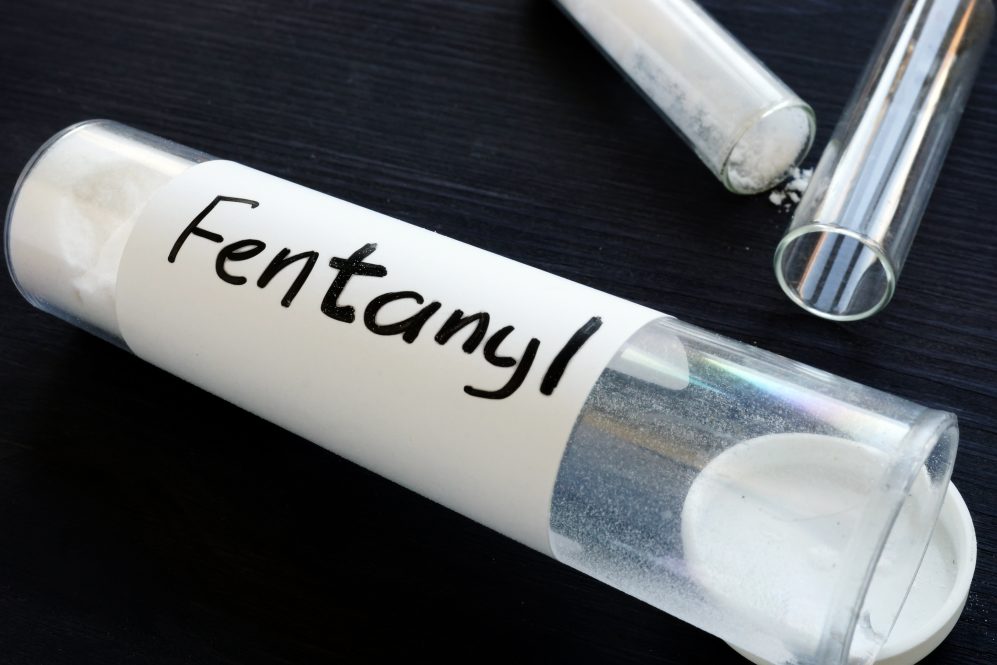Overdoses from synthetic opioids like fentanyl are steeply rising in Connecticut and across the country. The 12-month period ending in April 2021 was the deadliest year yet, with U.S. overdose deaths reaching a record high of over 100,000, reports the federal Centers for Disease Control and Prevention (CDC). This represents a 29% jump from the previous year, with the biggest culprit in more than 75% of deaths being synthetic opioids, including fentanyl.
“It seems to me that there is no end in sight to the opioid crisis, and things are not getting better but getting worse. For the last 12 rolling months, overdoses are up about 13-14% in Connecticut and the same is true for fatal overdoses,” says Peter Canning, EMS Coordinator for UConn John Dempsey Hospital in Farmington. He helped develop the initial successful pilot program in the City of Hartford that led to the establishment of Connecticut’s Statewide Opioid Reporting Directive (SWORD).
In the latest issue of Public Health Reports, lead author Canning and the SWORD program leaders published a 2019 case study on the real-life impact its near-real-time overdose surveillance tracking program is having. The study was part of a series of a dozen new publications regarding “The Surveillance of Nonfatal and Fatal Drug Overdoses: Best Practices, Innovations, and Lessons Learned.” The publications describe various innovative initiatives, like SWORD, funded by the CDC’s Enhanced State Opioid Overdose Surveillance (ESOOS) program to improve the data collection regarding fatal and nonfatal opioid overdoses.
SWORD was created in response to a state law passed in 2018 and fully implemented in June 2019. It requires all EMS agencies statewide to begin rapidly reporting by phone call all opioid overdoses to the Connecticut Poison Control Center at UConn Health, which serves as the Connecticut Department of Public Health’s (DPH) centralized 24/7 data collection site. This collection of near-real-time overdose data with a 24/7 overdose tracking map of the state has proven to be a successful early warning system for overdose spikes to help local EMS, health departments, law enforcement, harm reduction groups, and community partners quickly intervene to save more lives.
The SWORD program authors write: “States hoping to enhance tracking of the overdose epidemic and speed up identification of threats should consider adapting Connecticut’s surveillance system. In particular, they should consider near-real-time EMS reporting through their poison control centers such as in our SWORD model.”
For example, on June 1, 2019, the Connecticut Poison Control Center was alerted by EMS in Hartford that two people unknowingly smoked suspected crack cocaine mixed with fentanyl. Similar suspected overdoses occurred over the next few days, ultimately climbing to 22 overdoses and 6 deaths over a period of five days.
“Thankfully we were able to get out in the street to warn crack cocaine users, distribute fentanyl test strips, and urge users to not use alone and to have naloxone at the ready,” says Canning. “Consequently, while the overdose cluster went over several days and cost 6 lives, by knowing there was this mix of drugs on the street we were able to save more lives by intervening in the community to mitigate harm. We were able to identify who was overdosing and where they were overdosing, to target harm reduction efforts to those specific areas.”
The study authors concluded: “This model shows that robust public health surveillance of ongoing systematic data collection, analysis, and interpretation can be used to identify opioid clusters and inform public health responses, ultimately saving lives.”
Canning adds: “Our SWORD program helps us keep a good eye on our neighborhoods and is an excellent surveillance tool that helps us shape our public health response. It really is enabling us to understand more of what’s needed to prevent overdoses.”
According to Canning, the number one reason people are overdosing is because the drug supply is mixed with fentanyl. Over the last several years, fentanyl has almost completely replaced heroin in Connecticut. Fentanyl is 50-100 times stronger than heroin and even a small bag might unknowingly have a lethal amount of fentanyl.
“The reason so many more people are overdosing and dying is not because more people are using, but because it is so much more dangerous to use. If someone uses alone and they get a dose they are not expecting, they may die if not found in time,” says Canning. “When someone goes to the store and buys a beer, they know how much alcohol is in it. However, because of fentanyl, when someone buys a $4 bag of heroin/fentanyl, they don’t know how much is in it. People are dying because the drug supply is unsafe.”
The SWORD program has also helped identify a rise in overdoses due to counterfeit pills that look like Xanax, Percocet, or Oxycodone but contain lethal amounts of fentanyl instead. These lookalike tablets give users a false sense of security.
Canning says it’s important to recognize that many people who use drugs suffer from opioid use disorder, a chronic illness. For many, the disorder started with pharmaceutical opioids prescribed for an injury or an illness.
While there are many stereotypes about drug users, according to Canning, most overdoses are accidental, due to users receiving an unexpectedly potent dose as opposed to using more drugs than normal. Other overdoses occur due to lowered tolerance from users who have undergone periods of abstinence, such as recent release from drug rehabilitation or incarceration or personal choice.
“First responders don’t care about how many times they have to save overdose victims. We treat every patient with compassion and with dignity, and we do the best we can to bring them around and save them,” says Canning.
SWORD is a statewide collaboration between Connecticut DPH, OEMS, Injury and Violence Surveillance Unit (VSU), the Connecticut Poison Control Center at UConn Health, The High Intensity Drug Trafficking Areas (HIDTA) program, and Connecticut’s EMS providers. The program’s 2021 annual report is available online.
Study co-authors include the Medical Managing Directors of the UConn Health-based Connecticut Poison Control Center (CPCC) Dr. Suzanne Doyon, Dr. Katherine Hart, and UConn Health Emergency Medical Services Program Director Dr. Richard Kamin. Other co-authors include Sarah Ali, Susan B. Logan, Aliese Alter, Raffaella Coler, Dr. Steven Wolf, Kristin Soto, Lauren Whiteman, and Mark Jenkins.



